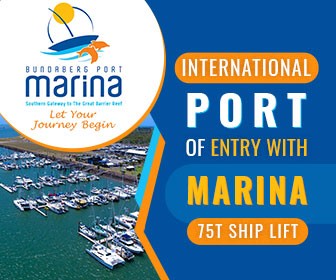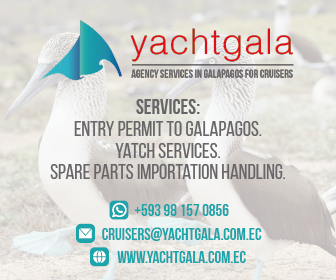Portrait of a Cruiser: Circumnavigator Tony Foulkes
New Zealand sailor Tony Foulkes has found his cruising equilibrium, spending six months in the Mediterranean and six months in New Zealand each year. However, it was a circumnavigation that laid the groundwork for his current cruising choices, as he recounts in his cruiser portrait for Noonsite.
Published 7 months ago
Name of Owner: Tony Foulkes
Nationality: New Zealand
Boat Name: Checkmate
Boat Type/Model and Size: Masthead Cutter Rigged sloop 14.32M LOA. Built in ferro-cement by Cooksons of Auckland in 1979.
Your Home Port: Auckland, NZ
Blog: sailmoondance.blogspot.com
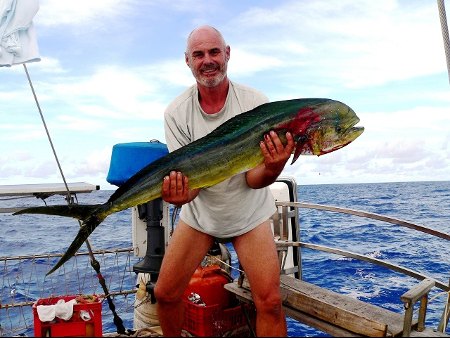

How did you start cruising?
Learning in dinghys and progressing to crew in racing keelers, to my own yachts. In 1997 I left New Zealand on a big Overseas Adventure, arriving in London where I lived and worked for a while. I joined a Dutch Tall Ship – The Swan Van Makkum – in Edinburgh and sailed in the Tall Ships Race to Bremerhaven. Later that year I joined the ship in Holland and sailed to the Caribbean for the charter season. Returning to England I bought a VW Combi Van and drove around England, Scotland, Wales and Scotland then via Europe to Corfu Greece where I worked for flotilla company Sailing Holidays Ltd.
Returning to New Zealand, I purchased Checkmate and prepared for an offshore voyage which turned into a circumnavigation.
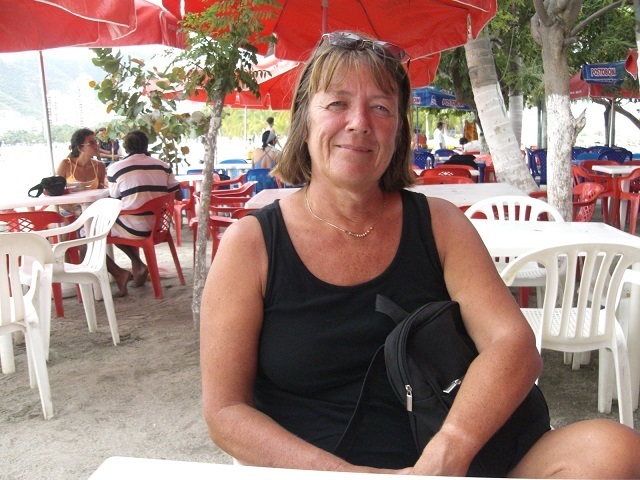

Tell us about your circumnavigation.
The Pacific to Australia
The circumnavigation started from Opua, NZ in April 2000. We first sailed to Tonga, leaving there in July for Fiji. In September we left Fiji for Vanuatu before heading for New Caledonia and then to Brisbane Australia, arriving November 2000. I lived and worked from the Scarborough Marina for a few months before recommencing the adventure in June 2001, sailing up the East Coast of Australia inside the Great Barrier Reef to Townsville, where I spent a year working before sailing around the top of Australia to Darwin arriving in September 2002.
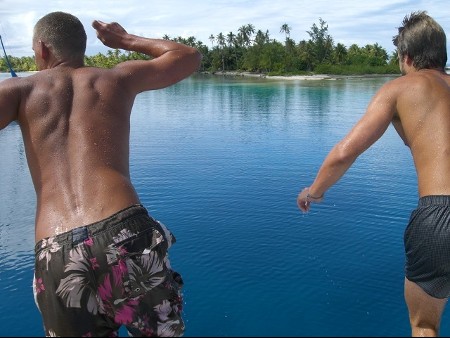

Indonesia to the Mediterranean:
From Darwin it was a six-day sail to Kupang, West Timor and a contrasting culture shock considering our time in Tonga, Fiji and Vanuatu. We found the people very helpful and the anchorages delightful. As always with cruising we met other cruisers on a similar journey and shared adventures until parting for our separate destinations. Sometimes meeting up later on similar routes.
Sailing in Indonesia was mainly day time, anchoring at night, sometimes staying for a few days as we made our way through the islands to Nongsa Point marina where we departed for Malaysia and then onto Thailand. The journey from Darwin to Thailand took from June to December 2002.
Phuket, Thailand was the perfect place to haul Checkmate into a yard and arrange for all and any repair/ upgrade work to be done. From outboard covers to new fuel tanks. It is also a place to live cheaply ashore and use the time to explore other nearby parts of Asia.
After stopping for a year, I left Thailand with a crew of three for the Red Sea and Suez. This was a longish journey via Sri Lanka, Maldives, Oman, Yemen, Eritrea, Sudan, to Egypt. We joined a fleet of other cruisers in Oman to transit the pirate alley along the top of Africa. The Danger Zone at that time was 120 miles long – a 24 hour convoy sail. No issues were encountered and the coalition forces could be heard nearby on VHF Channel 16. The crew departed – one from Eritrea and one from from Egypt and I continued solo through the Red Sea to Cyprus, then on to Turkey, where I returned to New Zealand for six months and the Southern Summer.
From there it was on to Greece and Corfu – the Ionian Island – where I had worked at as a boatbuilder a few years before commencing my circumnavigation. Then on to Croatia, returning to Greece to pick up two crew for the sail to Sicily, Italy as far as Rome, then the Spanish Balearic Islands via the Straits of Bonifacio. The best of the Spanish islands was Ibiza where I spent some time before continuing along the Spanish Coast to Gibraltar and the nearby Spanish anchorage of La Linea.
Mediterranean to the Caribbean
From the Mediterranean I sailed directly to the Canary Islands and Las Palmas where I crossed my path with the Dutch Tall Ship “Swan Van Makkum” which I crewed on in the Tall Ships Race in 1997. In Las Palmas I picked up four crew for the Atlantic crossing to the Caribbean. We left the day after the ARC rally and arrived in English Harbour, Antigua, in time for New Year celebrations.
Sailing in the Windward & Leeward Islands as far south as Grenada was a dream. The Caribbean Islands all have different cultures, flavours and languages. Leaving Grenada, the first stop was Los Testigos in Venezuela waters, then Porlamar in Isla Margarita. Isla Coche, Tortuga and Los Roques were short stops, before reaching Bonaire, first of the Dutch Antilles group. Curucao was the next Dutch Island and I stayed a month enjoying the anchorage at Spanish Waters, replacing some parts in preparation for the Pacific leg. The next island was Aruba, then on to Columbia and the San Blas islands which provided a welcome rest before continuing to Portobelo to start the Panama Canal process.
Panama to Tahiti
Leaving Panama the wind direction was from the North and we found it easier to make the five-day passage to Manta Harbour, Ecuador, where we crossed the Equator. The sail to the Galapagos took five days, where we spent six days cruising between Santa Cruz and Isla Isabela (snorkelling with penguins, sharks, sea iguanas, seals, tropical reef fish, manta ray and saw many types of coral, plus meeting Lonesome George, the last of a line of giant tortoises).
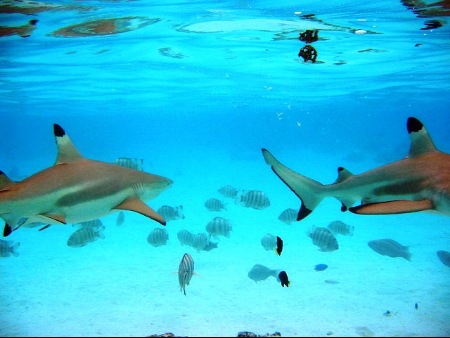

The next 26 days was our longest offshore passage to Autona Bay, Hiva Ova in the Marquesas. During the sail we caught many fish, hand steered for a while, had starry nights with phosphorescence, saw dolphins, sharks, whales passed under the boat, had our prop caught in a rope stalling the engine, kept radio contact with other cruisers and saw only one other yacht. From Hiva Oa we sailed to Tahuata, Manihi, Rangiroa Islands, arriving at Tahiti where the crew departed. The next 10 days visiting Moorea, Huahine and Bora Bora gave us a well-deserved break from long distance cruising.
Tahiti to New Zealand
Continuing in the Pacific, stops were made at Palmerston Atoll and Niue before arriving at Neiafu Harbour Vava’u in Tonga where I crossed my outward path.
Between Vava’u and Nukualofa the boom broke in a Chinese Gybe. This was fixed at Nukualofa by a crew member flying from New Zealand with a spare boom section. During this passage we experienced heavy rain, thunder and lightning during the night as well as calm seas and little wind.
The final leg to New Zealand was 12 days during which a whale breached near the yacht soon after leaving Tonga, the drive shaft parted and was reattached and the starter motor was replaced.
My circumnavigation was completed at the point of departure – Opua, Bay of Islands, New Zealand – in November 2007.
What changes have you seen since your circumnavigation and your cruising now?
Since I started cruising, communication and navigation have improved beyond belief. From the early days of dial up internet, to where navigation can now done from a cellphone, something that was impossible in 2000.
What did you do after completing your circumnavigation?
In 2011 I bought a Beneteau 40CC in the BVIs and with a crew of two followed my passage to Panama City. While we were at Rodadero Columbia, the news came through of the devastating earthquake in Christchurch – home town for the crew. This was not good news so far from home, but to their credit they stayed on until Panama. I then had a professional crew complete the delivery and sold the yacht back in New Zealand.
In 2016, I bought a Moody 38 in Turkey and commenced cruising in the Mediterranean, sailing from Turkey to Sicily in the first year.
Selling in 2017 in the expectation of returning to a yacht in New Zealand, my plans changed and I decided on staying in the Med, buying another Beneteau 40CC and cruising back to Turkey, spending three months in Turkey and three months in Greece to comply with the Schengen regulations. Then COVID hit – so I sold the Beneteau.
In 2022 post COVID, I purchased another Beneteau 40CC in Rome and cruised the Italian Coast and Sicily for three months in 2023, before returning to Greece and the Ionian Island of Corfu. This put me in the position of breaking Schengen rules – 180 days in 2 Schengen Countries. Emails to embassies and officials confirming an extension under the Bilateral agreement between Greece and New Zealand, together with flight details, ensured that Immigration Greece at Athens airport had all the necessary documentation and after consultation our passports were stamped.
What type of cruising are you doing currently?
I am currently sailing six months in the Mediterranean and spending six months in New Zealand – summer in both hemispheres. I am mainly based in Corfu where I was employed by Sailing Holidays Limited in 1996/7. The Ionian Sea has provided the bulk of recent cruising, but has extended from Rome in Italy, Sicily and Turkey.
What were the key reasons you selected your current boat?
Comfort of a large aft cabin with access to all areas of the boat. Also, it can easily be handled by two people.
What other boats have you owned?
I have owned a K class Keeler and Walker 35 in New Zealand. A Moody 39 and 2 Beneteau 40CCs in the Mediterranean. I have also owned and sailed a Beneteau 40cc from the Caribbean to New Zealand with the assistance of crew.
What changes have you made to your current boat?
Added radar, forward looking sonar, liferaft and electronic (laptop) navigation.
Most useful equipment fitted and reasons for this choice:
All of the above were equally useful for the purpose – The liferaft was never used – in addition a good SSB (opened to HAM) assisted communication with other yachts and receiving weather information. A reliable anchor winch is also very useful.
Neither Iridium GO, Starlink, or Youtube were available at the time of my circumnavigation.
Equipment regrets, or things you would do differently:
No regrets on equipment. If doing a circumnavigation again, I would go slower and take longer to complete – even if it meant leaving the yacht and working ashore for periods.
List the countries you have cruised:
Tonga, Fiji, Vanuatu, Noumea, Australia, Indonesia, Singapore, Malaysia, Thailand, Sri Lanka, Maldives, Oman, Yemen, Eritrea, Sudan, Egypt, Cyprus, Turkey, Greece, Croatia, Sicily, Italy, Spain, Gibraltar, Canary Islands, Cape Verde Islands, Antigua, St. Martin, Anguilla, St. Barth’s Guadaloupe, Dominica, Martinique, St. Vincent, Isle de Saintes, Tobago Cays, Carriacou, Grenada, Los Testigos, Venezuela Isla Coche, Tortuga, Isla de la Roques, Dutch Antilles, Columbia, San Blas, Panama, Ecuador, French Polynesia, Cook Islands, Niue.
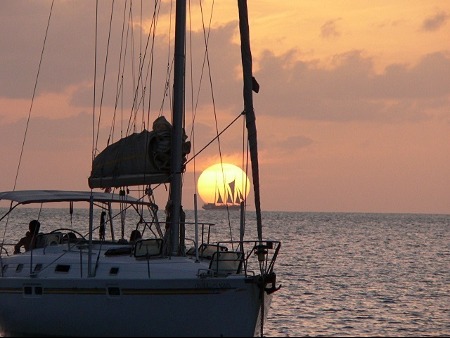

Future cruising plans:
Mediterranean for six months each year.
List the oceans/seas you have crossed:
Pacific, Tasman, Coral, Arafura, Indian, Mediterranean, Atlantic.
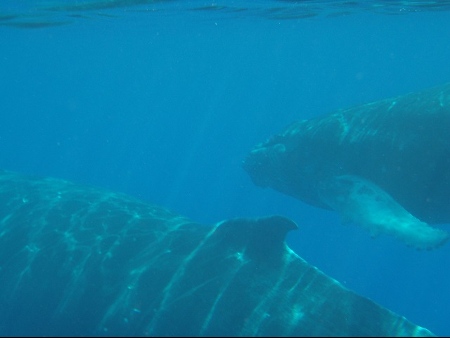

Approximate sea miles:
50,000.
Scariest day on the water:
The passage Niue to Tonga: Battling 60 knot winds and big seas for 24 hours and the boom was damaged in a sudden gybe.
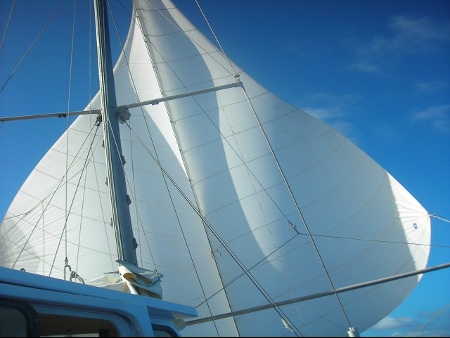

Best cruising moment:
There are so many of them. From cruising inside the Great Barrier reef – Australia, to sunsets at Shirley Heights, Antigua.
Favourite cruising area and why:
The Mediterranean Sea for its variation of everything from wind, countries and cultures. Easy access to repairs and places to spend the winter and safely leave the boat.
Favourite anchorage:
Cook’s Bay – Moorea (see photo).
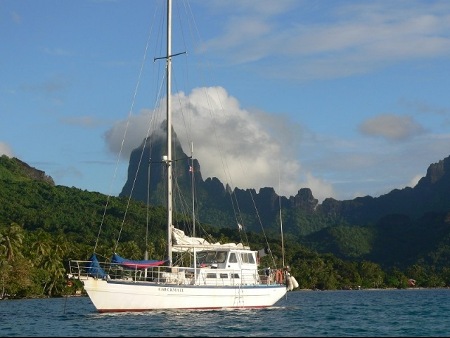

Favourite cruising apps:
Navionics, Predict Wind, Ventusky, Navily, Met Service, Coastguard.
Favourite cruising websites:
Noonsite, Cruisers Forum
Favourite cruising books:
South Sea Vagabonds, From Kauri Tress to Sunlit Seas, Sell Up and Sail, To The Ice And Beyond
What advice or message would you want to pass on to anyone new to cruising or thinking about casting off the dock lines?
Just do it. Make the dream come true. First crew on other yachts. Racing is a good way of learning to cope with situations you would never hope to encounter cruising. (Manoeuvering close to other yachts for one!).
Cruising is a wonderfully healthy lifestyle. The fresh air provided by an outdoor lifestyle helps immensely. Walking for most requirements to provision and repair the yacht in exotic and warm locations also assists in remaining healthy. Underway, the yacht is constantly moving and adjusting to the movement helps. While in port and not eating aboard, local markets and restaurants provide a fresh and nutritious diet. There will come a time when perhaps you are not able to cruise in the manner you have dreamt of. It is important to do everything necessary to achieve your goals before that time comes.
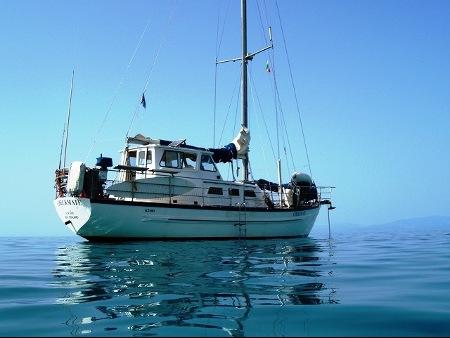

Why cruise? What is it that inspires you to keep cruising?
The freedom to explore.
Nothing beyond your horizon has any relevance.
Travel to new places while taking your home with you.
Living well in a small space.
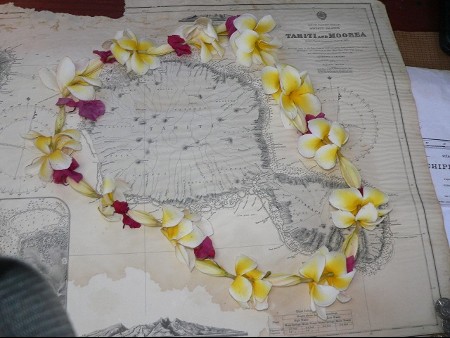

……………………………………
Related Content:
More Portrait of a Cruiser stories
If you think you have an interesting story to tell and would like to take part in our Portrait of a Cruiser series, please contact Sue at editor@noonsite.com for a questionnaire.
……………………………………..
The opinions expressed in this article are the author’s own and do not reflect the view of Noonsite.com or World Cruising Club.
……………………………………
Find out all news, reports, links and comments posted on Noonsite, plus cruising information from around the world, by subscribing to our FREE monthly newsletter. Go to https://www.noonsite.com/newsletter/.
Related to following destinations: Australia, Brisbane, Darwin, Fiji, Galapagos, Hiva Oa, Isabela, Lau Group, Marquesas, Neiafu (Vava'u), New Zealand, North Island (New Zealand), Northern Territory (Australia), Nuku'alofa (Tongatapu), Opua (Bay of Islands), Queensland, San Cristobal, Santa Cruz, Tonga, Vanuatu
Related to the following Cruising Resources: Circumnavigation, Mediterranean, Portrait of a Cruiser, Routing




